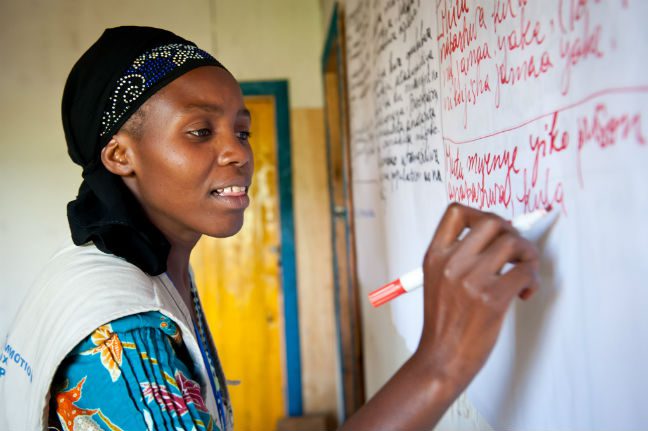
In 2012, Oxfam Australia commenced a project with Dr Phoebe Wynn Pope and the Australian Civil-Military Centre to deepen understanding of how different actors – military and civilian, political and humanitarian – understand the concept of the Protection of Civilians (POC) in armed conflict.
The concept of affording special protections for civilians and other vulnerable populations in times of war can be traced back centuries. But in modern times, it has been further developed and codified in international humanitarian law through the Geneva Conventions and their additional protocols.
In the 1990s — following the devastating failures to protect civilians in Rwanda and Srebrenica — the international community and the United Nations embarked on a more comprehensive effort to strengthen and expand the practice of protecting civilians from threats of violence in situations of armed conflict.
In 1999, the UN Security Council adopted the Protection of Civilians in Armed Conflict as an ongoing thematic concern, while various UN bodies, regional organisations, humanitarian agencies and others have developed policies and guidance to protect civilians through activities including peacekeeping operations and humanitarian response.
More than 15 years on, POC has expanded in range and scope and is now employed by a whole range of actors – from peacekeepers to humanitarian non-government organisations. However, it’s often said that ‘everyone understands protection differently’, leading to confusion and inconsistencies in the way different actors undertake POC activities on the ground, and limiting how effectively these efforts complement one another and improve safety and protection for those most at risk of violence.
The research project In Search of Common Ground: Understanding Civilian Protection Language and Practice for Civil and Military Practitioners set out to answer the question – is there really a disconnect in the way various actors understand POC, or is this only an assumption?
Following desktop research and consultations to document and analyse the evolution of POC within the UN Security Council, the UN Department of Peacekeeping Operations (DPKO) and the broader humanitarian community, the final phase of the project involved a survey to develop an evidence base around how various actors think about POC. Experienced protection practitioners including police, military, humanitarian actors, government representatives, academics and policy makers from 25 countries were surveyed.
The final research report and findings conclude that in general there is agreement on the theory of POC, including its origins in international humanitarian law and its application in times of armed conflict. However, there are real differences in the way different actors implement protection in practice, which risks impeding coherent implementation and evolution of the concept into the future.
For POC to continue to develop in a manner that ensures better protection for those at risk from violence, shared understanding and clarity between different stakeholders must be improved. This includes better communication between different protection actors to address poor understanding of each other’s roles. Further training should be undertaken for all protection actors – not on what POC is, but on how it should be applied, who has a role in its implementation, and how it fits into a broader protection response.
The findings of this research will inform ongoing discussions, advocacy and training with peacekeeping missions, governments and UN agencies in order to contribute to improved POC practice worldwide.